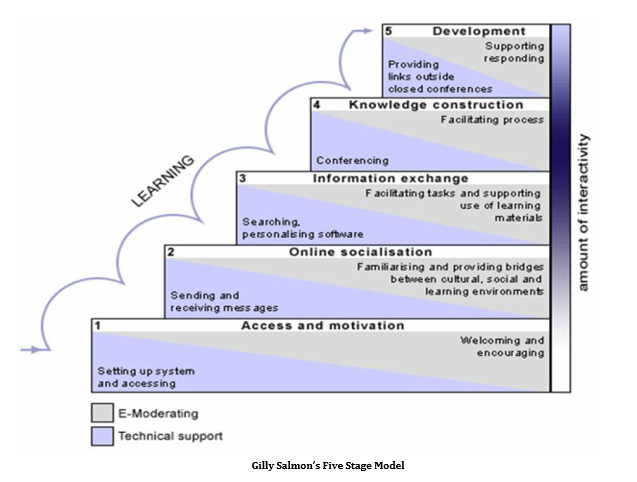ATD Blog
Designing for Online Collaborative Learning
Thu Apr 14 2016

This is the second post in series on how to design, conduct, and assess an effective online collaborative learning program.
The first installment of this series looked at why collaborative learning is an important instrument in the L&D professional’s toolbox. Now, let’s take a closer look at specific design elements of collaborative learning.
To ensure participation and responsiveness, consider the following questions when designing the structure of an online collaborative learning program:
Is it clear, doable, and agreed upon by stakeholders?
Is it flexible enough to accommodate changes and improvements, if required?
Does it support the goal of online collaborative learning?
Does it require participants to contribute equally?
Will it provide an environment for open interaction, guidance, feedback, and evaluation?
For an active online discussion, use the Five Stage model by Gilly Salmon to gradually build on participants’ previous experiences and break isolation for greater participation.

For effective online learning and reflection, participants should be able to take control of their own learning, then build on acquired ideas and apply them on the job, thereby maximizing the value of online collaborative learning. Scaffolding within the approach helps to bring participants close to the desired level of contribution.
Here are some tips for designing an online collaborative learning program:
Include introductory topics to familiarize participants with the online collaborative learning program, its importance, and its monitoring process.
Explain the goal and communicate the reward. This will cater to the initial stages of the Five Stage model.
Help participants understand their role. They need to take ownership of participation, articulation, reflection, learning, supporting the learning process for others, and self-assessment. Try to group participants with similar levels of knowledge to gain more cognitive benefits through collaboration.
Build a sense of community for a shared purpose, so that participants get to know and rely on one another and feel comfortable enough to collaborate. Support the growing group cohesion and confidence.
Set group rewards based on individual learning. This reward interdependence will help achieve individual accountability.
Organize discussion topics with prestructured threads to avoid repetition, redundancy, and discussion chaos. Well-defined threaded discussions facilitate in-depth discussion and interactive responses within easy-to-find clusters.
Ensure that the environment is conducive to learning through meaningful discussions and guidance sharing. Also, make sure that the learning environment is intuitive and accessible from outside the workplace for ease of use and flexibility.
Include various types of collaborative activities. Some activities may require participants to work on different elements of an activity individually that can be combined at a final stage. This can be tweaked to form another kind of activity where participants are required to work sequentially (building on the progressive version of output one after the other) and then finally bring together a complete product. Another common way to collaborate is to get all the members of a team to work together to produce an output.
Give participants opportunities to think, rethink, and self-evaluate their understanding through written exercises.
Include incremental, reflective open-ended questions, so participants can build on their knowledge by assimilating new knowledge into their job duties. This supports a continual learning process and will help demonstrate learning in the workplace. The questions should be very specific to the discussion topics and directly link to participants’ work requirements.
Establish clear and transparent criteria for assessment. It should indicate the success and failure criteria or the level of acceptable performance for each activity or assignment. This directly affects participants’ performance. The criteria may include quality of posts, performance in group tasks, extent of collaboration, and evidence of improvement in knowledge, skills, or behavior.
In addition to strategically designing and structuring an online collaborative program, conducting the sessions in a way that results in deeper learning and reflection is equally critical.
The third post in this series will cover guidelines for moderators and facilitators on how to effectively conduct an online collaborative learning program.
You've Reached ATD Member-only Content
Become an ATD member to continue
Already a member?Sign In
